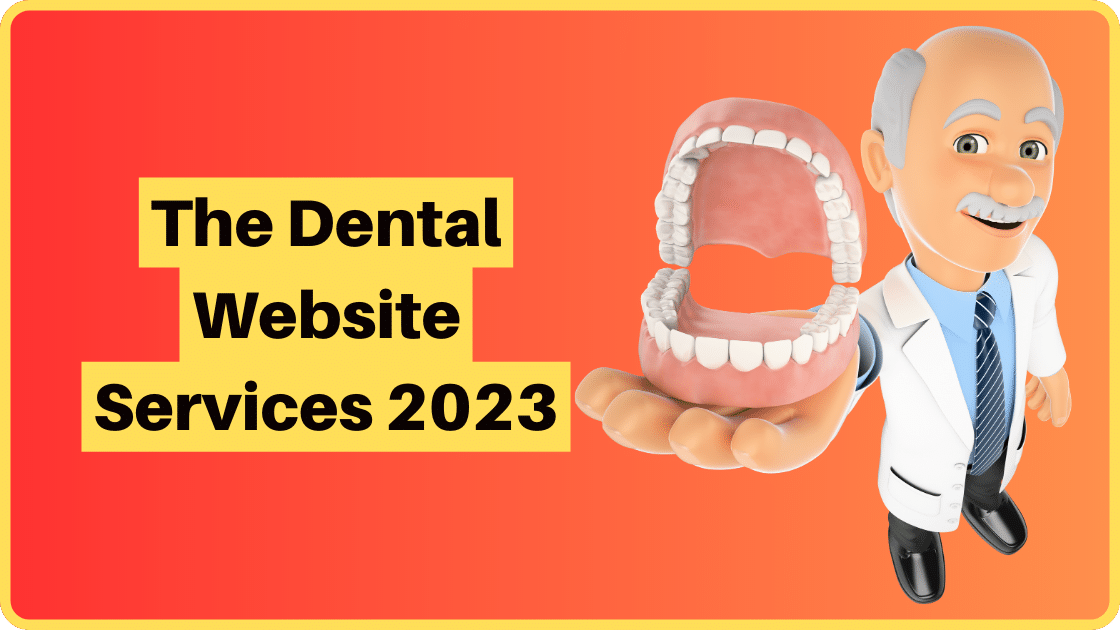Are you dentist and looking for best Dental Website Services in your areas, In this blog post we inform you with all details for Dental Website Services Topic below.
You will earn 0.5 $ after click on and and visit this pages
Amount will be transfer into timebusks account after 5 hours
A strong digital footprint is vitally important for businesses – dental practices included! An optimized website can attract new patients while simultaneously strengthening brand recognition.
This article will outline key elements of an effective dental website design and best practices regarding maintenance, Hosting, managing content production, SEO, PPC advertising analytics, social media copywriting, and branding accessibility.
- 7 Key Elements for Designing an Effective Dental Website Services
- Building Website With Dental Website Services
- Dental Website Maintenance
- Make Your Dental Website Management Easier with These Tips
- Content Creation Strategies for Dental Websites: What Content to Add and Why
- Choose Appropriate Images for Your Dental Website
- How to Improve Dental Website Search Rankings
- Successful PPC Advertising for Dental Websites: Strategies and Advice
- Setting Up Website Analytics
- How Social Media can increase dental website Traffic
- Why Branding of Dental Website is Crucial
- How to Select the Appropriate Dental Website Brand
- Making Your Dental Website Accessible: A Step-by-Step Guide
- Conclusion
7 Key Elements for Designing an Effective Dental Website Services
As you build your dental website, keep these critical aspects in mind to create an accessible and visually attractive online presence:
1. Professional and Modern Designs
Your dental website should reflect your practice’s professionalism and expertise.
An appealing modern design conveys brand recognition to potential patients while creating trust through engaging imagery or videos showcasing your practice’s staff, facilities, and services.
2. Clear and Consistent Navigation
Make it simple for visitors to locate what they need on your website with clear navigation menus and labels that are uniform across pages, plus an integrated search bar that enables users to find specific content or services quickly and efficiently.
3. Design for Mobile-Friendliness and Responsive Webpage
With more people using mobile devices than ever, it is more essential than ever for dental websites to be optimized for mobile screens.
Utilize responsive design that adapts seamlessly across screen sizes and orientations; load quickly on mobile phones while making patient navigation simple.
4. Contact Information and Call-to-Action Buttons
Create an easy process for visitors to reach you and make an appointment by including contact forms with phone numbers, email addresses, physical addresses, and call-to-action buttons that encourage activities, such as “Call Now for support,” “Book your Appointment,” or “Get the Free Consultation.”
5. Reviews and Testimonials
Social proof can help build trust with potential patients by featuring testimonials and reviews from satisfied patients on your website.

Furthermore, third-party review platforms like Google My Business, Yelp, or Healthgrades allow businesses to collect and display reviews easily.
6. Patient Education and Resources
Your dental website should do more than promote services; it should educate visitors on oral health and hygiene.
Include educational articles, videos, infographics, and resources to help patients better understand their dental needs and treatment options.
7. Patient Portals and Electronic Forms
Make it simple for patients to access and submit necessary forms, like new patient registration and medical history, and consent forms.
Create user-friendly digital platforms or patient portals which reduce paperwork while saving time.
Building Website With Dental Website Services
Select a Domain Name
Your domain name serves as the address for your website; make it memorable by choosing something unique yet easily spellable, like using your practice’s name or relevant words such as “dentalcare” or “smile center.”
Selecting a Web Host
A web host provides space on the Internet for your website, providing uptime, speed, security, and customer support as important factors when making your choice.
Design Your Website
Your website design is integral in drawing in visitors and maintaining them for longer. Choose an eye-catching professional design that showcases your practice’s branding; also, ensure it’s user-friendly with clear calls-to-action and navigation tools.
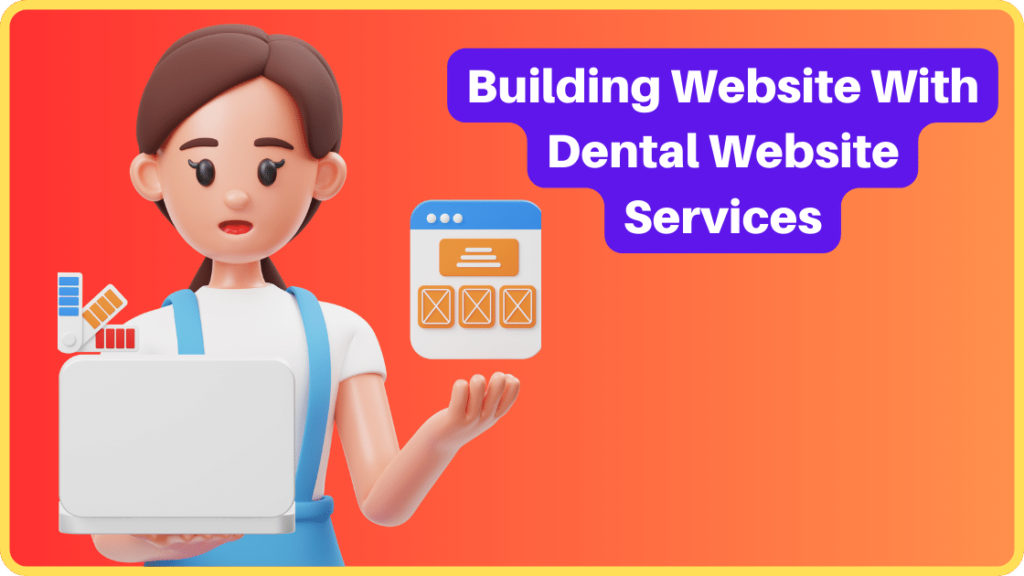
Create Content
Producing engaging, educational content is critical to increasing visitor numbers and building trust between potential patients and your services. Create exciting posts to inform likely patients of your services and develop their knowledge base about you as an authority in this industry.
Search Engine Optimisation Strategies (SEO).
Search engine optimization (SEO) helps your website rank higher on search engine results pages. Optimize it with relevant keywords, meta descriptions, alt tags, and quality backlinks.
Use Analytics to Evaluate Performance
Google Analytics can help you gain insight into how visitors engage with your website, pinpoint areas for improvement, and keep tabs on traffic volumes, user behavior patterns, and conversion rates.
Dental Website Maintenance
Maintaining your dental website is vital in staying secure and up-to-date, so regularly updating software, plugins, and security measures, as well as backing up, is recommended in case of a security breach or data loss occurs.

Choose The Ideal Dental Website Hosting Solution Now
Consider factors like uptime, speed, security, and customer support when selecting a web host for your dental website. Look for one with reliable performance and 24/7 customer care service to find an appropriate partner.
Make Your Dental Website Management Easier with These Tips
Maintaining a dental website can be challenging, but there are ways to simplify the task. A content management system (CMS), like WordPress, simplifies content editing and management while automating backups, security scans, and software upgrades for maximum convenience.
Below are our Top Five Dental Website Templates to Create a Strong Online Presence
Website templates provide pre-designed website layouts you can quickly customize for your practice’s branding needs. Here are five dental website templates worth taking a closer look at:
Dentista’s Dental Clinic and Care Office. We Provide Expert Dentist Care, Patient Education, Smile Center Services, and Outstanding Website Themes
There is an array of website themes tailored for dental practices available on the Internet today; here are a few that stand out as must-consider choices:
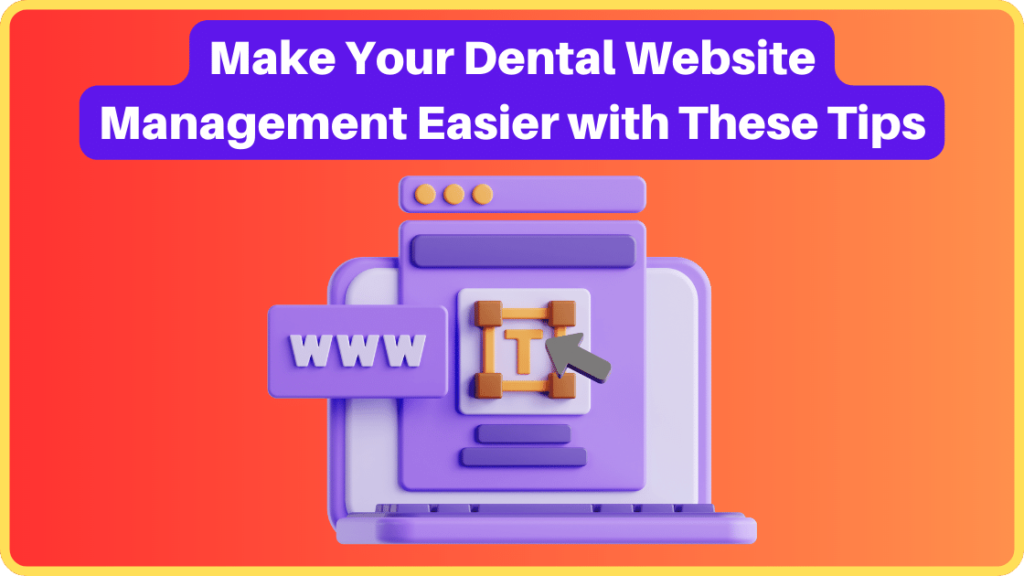
1. Avada
Avada is a highly flexible website theme ideal for many industries and professions – including dental practices. Featuring pre-built website templates and drag-and-drop page builders to build professional-looking sites quickly and easily.
2. Divi
Divi is another highly customizable website theme offering pre-built website templates and page builders as well as an advanced split testing feature to optimize the performance of websites.
3. Dentalia
Dentalia is an intuitive website theme crafted explicitly for dental practices. Featuring appointment booking forms and treatment pages and responsive design capabilities, making it suitable for mobile phones, this theme offers everything needed for running successful practices.
4. DentalClinic
Another website theme explicitly designed to support dental practices, DentalClinic, includes customizable features like appointment booking forms, treatment pages, team member profiles, and pre-built website templates.
Dent-All is a modern and responsive website theme ideal for dental practices, offering pre-built templates such as appointment booking forms and treatment pages to make customization of the site simple. Furthermore, its drag-and-drop page builder makes site customization effortless!
Content Creation Strategies for Dental Websites: What Content to Add and Why
Your dental website serves as the digital face of your practice, and therefore, it should look fantastic while offering helpful information to patients. Here are some key components you should include in it.
1. Homepage
Your homepage should be visually engaging and give visitors an overview of your practice. It is easy for them to use and contains clear calls-to-action (CTAs), encouraging visitors to book appointments or learn more about your method’s services.
2. About Us Page
Your About Us page allows you and your team to introduce themselves and communicate their qualifications, experience, and specialties directly to potential patients. Incorporate photos of team members and an About Us statement outlining values and commitment towards patient care on this page.
3. Services Page
This page should provide a detailed outline of all your treatments while emphasizing any unique procedures or technologies that distinguish your practice from competitors.

Before-and-after photos will also allow your patients to visualize the results they should expect.
4. Patient Testimonials
Testimonials can help build trust with potential patients. Consider creating a page dedicated to testimonials or including them throughout your website.
5. Blog
Maintaining an active blog can establish you as an authority in your field while attracting more website visitors. Ensure that topics are relevant to patients, like oral health tips or technologies being introduced into care, as well as frequently asked questions, are covered on it.
6. Contact Information
Make it simple for prospective patients to connect with you by including contact information like your phone number, email address, and physical address on every page of your website. Consider also including a form where visitors can submit messages directly from their computers.
Choose Appropriate Images for Your Dental Website
Images are essential in making any website visually engaging and compelling; dental practices mainly rely heavily on images as part of their online presence.
Your website must showcase services offered, facilities available, and team in an appealing way through visually-appealing photos that represent them all effectively. But how do you select appropriate images? Here are a few helpful hints:
1. Opt for high-resolution images
Blurry or low-resolution images can make your website unprofessional, so invest in high-quality shots that present your practice as effectively as possible.
2. Select images that accurately convey your brand

Your website should represent your brand’s personality and values, selecting images that reflect these traits and convey the desired message to visitors.
3. Market your services and facilities
Your website should provide potential patients with an in-depth explanation of the services you offer and facilities they should expect to see, using images to showcase offices, exam rooms, and equipment.
How to Improve Dental Website Search Rankings
Search engine optimization (SEO) refers to improving a website to rank higher on search engine results pages (SERPs). Here are a few suggestions for strengthening dental website SEO:
1. Research Keywords.
Locate and utilize the search phrases patients enter when looking for dental services in your region, then incorporate those terms in your website copy, meta descriptions, URLs, etc.
2. Optimize Your Website Structure
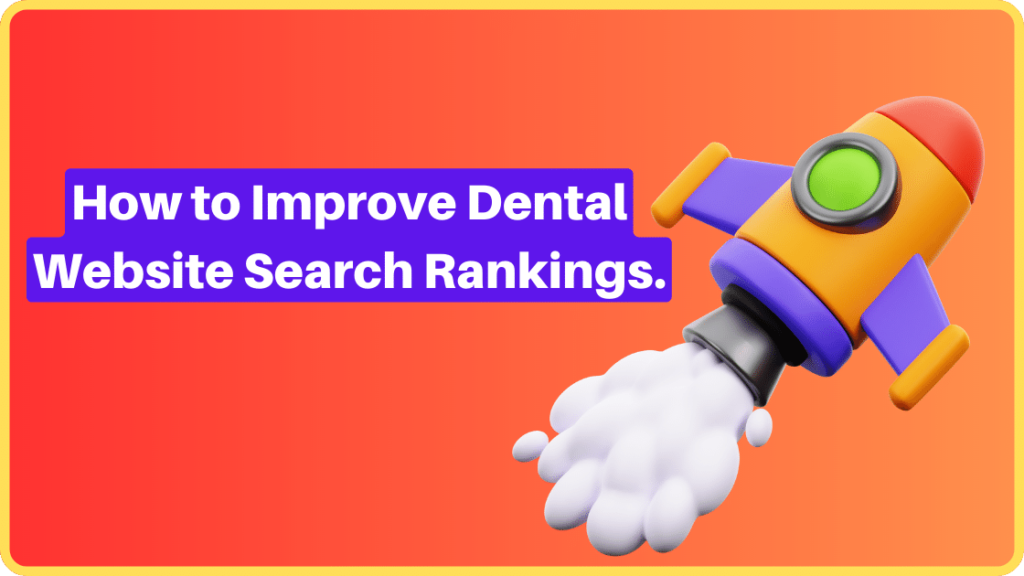
Make your website user-friendly by including headings and subheadings that help search engines understand. This will prevent confusion among site visitors.
3. Optimize for local search
As a dental practice, your primary target audience will likely reside nearby. To optimize for local search, including city or town names in copy and meta descriptions on your website to better target searchers in that location.
Successful PPC Advertising for Dental Websites: Strategies and Advice
Pay-per-click (PPC) advertising can drive visitors directly to your website by paying for ads on search engine result pages. Here are a few critical guidelines for running successful Pay Per Click Campaigns:
Before launching a Pay Per Click campaign, clearly define its goals. Are your objectives to drive website traffic or leads, promote an individual service or increase brand recognition?
Your chosen dreams will determine which keywords and messaging to include within ads that relate directly to this goal.

2. Select appropriate keywords
Select keywords relevant to your services with high search volumes, using negative keywords as needed to prevent unnecessary clicks and spent advertising spend.
3. Write compelling ad copy
Your ad copy should entice visitors to click through to your website with clear messaging and strong call-to-actions, driving conversions.
Setting Up Website Analytics
To successfully integrate website analytics for your dental website, follow these steps:
Choose an analytics platform such as Google Analytics – its free option is widely popular and well known – sign up and follow its setup instructions, then install the tracking code onto your website’s HTML. This involves inserting some piece of code directly into its code, providing tracking functionality.
Set goals: Goals enable you to track specific actions on your website, such as form submissions or appointment requests, so it becomes easy to measure progress against specific initiatives on the Internet.
When your website analytics are set up, the next step should be tracking some metrics. Here are a few key ones you’ll want to keep an eye on:
Traffic Sources
This metric indicates where website visitors are coming from – search engines, social media, or direct traffic – so you can better target marketing initiatives to achieve maximum return.
Bounce Rate
Your website’s bounce rate indicates how often visitors leave after viewing only one page on it, suggesting that it does not engage visitors enough or offers poor user experiences.

A high bounce rate might signal to potential advertisers that something about your site needs work; an increased bounce rate might signal to potential advertisers that your content or user experience is lacking, signaling them to avoid it in future visits.
Time on Page
This metric helps measure how long visitors are spending on each of your website pages, providing insight into which ones are engaging to visitors and which may require improvement.
Conversion Rate
Your website’s conversion rate measures the percentage of visitors who complete an action (for instance, filling out a contact form or scheduling an appointment). Tracking this metric allows you to assess its success at producing leads.
How Social Media can increase dental website Traffic
Social media has quickly become a powerful way for businesses to connect with their target audiences and promote services while driving traffic back to dental websites.
Leveraging social media as part of your dental website marketing plan can increase your online presence while producing more leads. Here are a few strategies for using it as part of growing dental website traffic growth:
Select the appropriate social media platforms.
Not all social media platforms are equal, and you should consider which are more suitable to promote your dental practice than others.
While social networks like Facebook and Instagram may work better as options for dental procedures, LinkedIn could provide better opportunities for B2B services.
Create Engaging Content To drive traffic to your website, creating engaging and informative content such as blog posts, infographics, videos, or patient testimonials is crucial to driving engagement and traffic growth.

Make sure it speaks directly to your target audience while showcasing your expertise.
Apply Hashtags Utilizing hashtags on social media is an easy and efficient way to expand your reach, connecting with users who may be interested in your services and providing content discovery for them.
Use relevant hashtags when posting to help users discover it faster.
Engagement / Community Building
Foster engagement between users and your posts by asking questions, Hosting contests, or offering special promotions. You could run polls to gather user input or provide special giveaways and discounts! To build a loyal social media following.
Why Branding of Dental Website is Crucial
1. Differentiate Your Practice From Competitors
An effective dental website can set your practice apart in an increasingly competitive field like dentistry and attract more patients to your practice. A unique, memorable design will set it apart and draw them in as potential new customers.
2. Build trust among patients
An informative dental website can help build trust with potential patients by showcasing your expertise, sharing patient testimonials, and offering valuable resources – helping establish yourself as an experienced, credible dental provider.
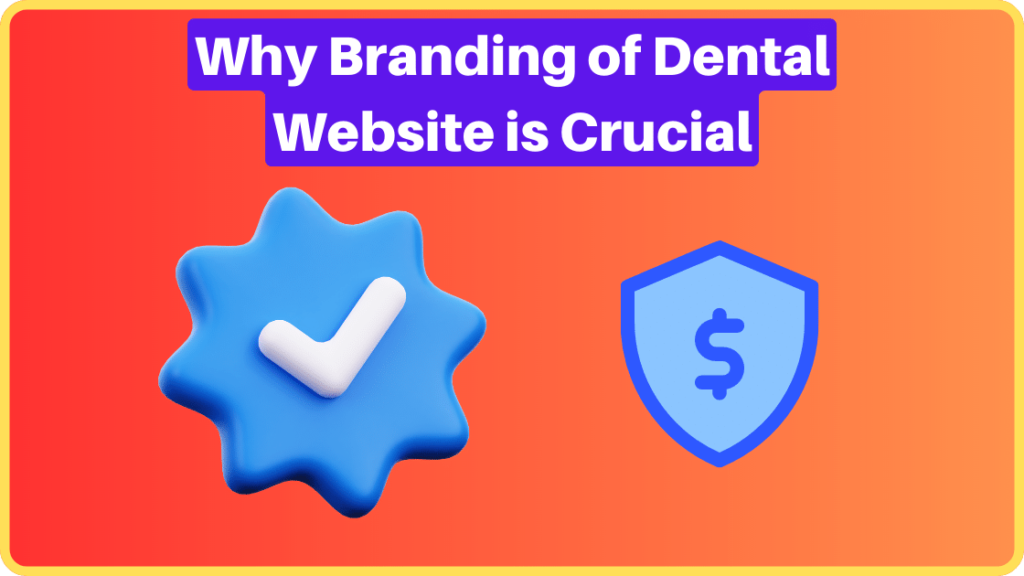
3. Improve search engine rankings
Designing an effective dental website can significantly boost search engine rankings and visibility online. By adopting SEO best practices, your SEO campaign could bring in additional organic traffic, which leads to new patients being drawn in by your site.
4. Strengthen Your Brand Your dental website is an extension of your brand. Including critical elements from this experience, such as logo, color scheme, and messaging – such as your logo – to strengthen the overall experience for visitors can create an excellent brand experience for them.
How to Select the Appropriate Dental Website Brand
1. Define Your Brand Identity
Before designing a dental website, it’s crucial that you define your brand identity – this includes brand values, messaging, and visual elements – in order to ensure that it accurately represents your practice while engaging your target audience.
By crafting an engaging brand identity for yourself, a website can effectively represent and connect with its target demographic.
2. Select the Proper Design Elements
As part of designing your dental website, selecting appropriate design elements to convey brand identity effectively can be critical.
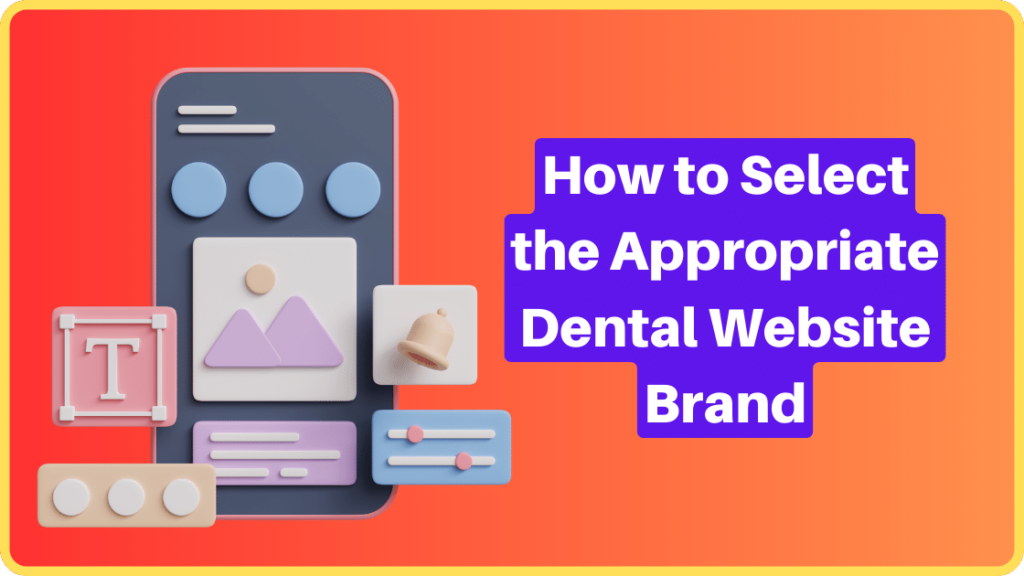
These may include color schemes, typographies, images, and layout. Choosing the correct elements to build upon brand image effectively and creating visually engaging websites that effectively reflect them is critical for creating unique websites that exemplify what your brand stands for.
3. Optimize for search engines
Alongside design elements, optimizing a dental website for search engines is equally important. By including keywords, meta descriptions, and header tags in the content on the page, you can increase search engine rankings while drawing in more patients.
4. Offer quality content
An effective dental website goes beyond design and optimization; it should also offer patients valuable content like blog posts, patient testimonials, and educational resources that establish you as an industry thought leader while building trust between yourself and the patients who visit it.
Making Your Dental Website Accessible: A Step-by-Step Guide
1. Select a responsive design
Responsive design ensures your dental website can be accessed on multiple devices – desktops, tablets, and smartphones – providing your patients with an enjoyable user experience and improving your search engine rankings.
2. Add alt tags for images
Alt tags provide alternative descriptions for images for people with visual impairment or slow internet connections, making your dental website more accessible while improving SEO rankings.
By including alt tags in each image on your dental site, alt tags make your site even more user-friendly while enhancing search engine optimization (SEO).
3. Provide video captions
Captions provide essential assistance to people who are deaf and hard of hearing, making your website more inclusive and accessible for these audiences.
By including captions in videos posted online, your videos become even more inclusive and accessible for visitors who rely on hearing assistance devices to watch content online.
5. Consider accessibility features when planning accessibility features
Adding accessibility features like text resizing and high contrast mode can make your dental website more user-friendly for those with visual or cognitive impairments or cognitive disabilities, improving the user experience for all patients.
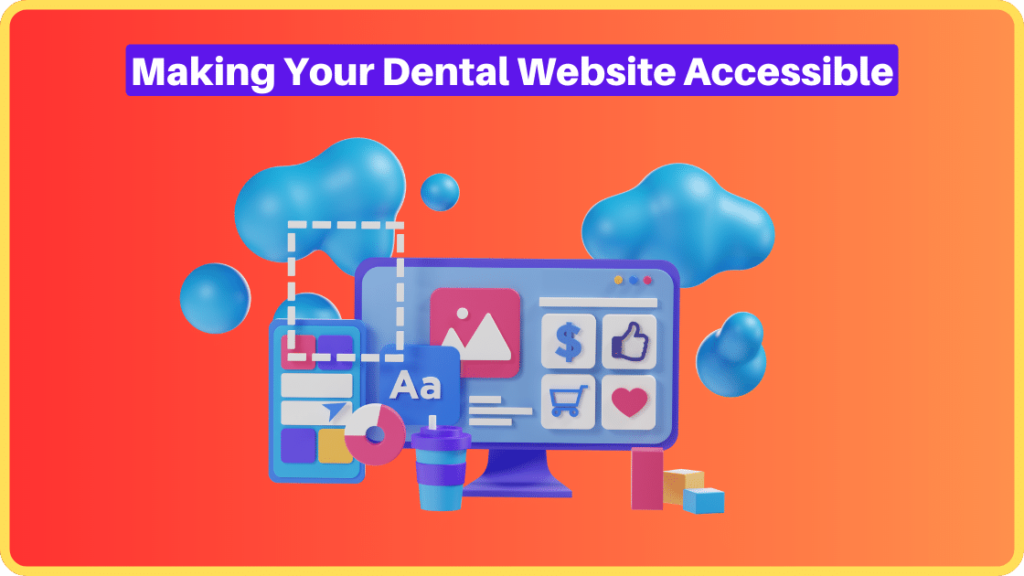
Including such options on your site can enhance patients’ user experiences.
6. Optimize page load times.
An inefficiently loading dental website can quickly turn away visitors and increase bounce rates. To improve page load times, compress images, streamline code, and use a content delivery network (CDN).
7. Secure Hosting
Want your dental website to remain safe? Ensure it offers SSL certification and regular backups and security updates from its Hosting provider to protect patient data while building trust with patients. Ensure these features are available.
8. Test and Optimize
Your dental website must be regularly tested and optimized by conducting usability tests, analyzing website analytics data, making changes based on feedback or analytics analysis, or by improving on data-driven improvements made with feedback or statistics in mind to make sure your site remains accessible and effective for patients and potential visitors alike.
Conclusion
An attractive and accessible dental website is essential to the success of any practice.
By including branding elements, optimizing for search engines, and guaranteeing accessibility features, you can draw in patients while building trust in the community and creating brand recognition through trustworthiness.
Use our step-by-step guide to create a visually attractive and user-friendly one!
THANK YOU FOR READING THIS BLOG TILL HERE
